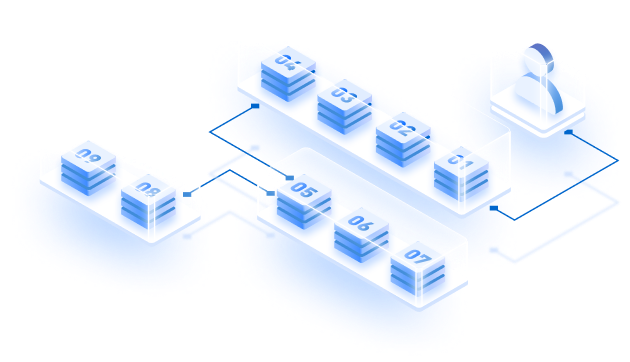Over 115 interconnected blockchains, $3.5 billion in monthly cross-chain activity, and more than 200 chains already developed. These are the vital signs of a thriving digital nation-state, and they all trace back to one foundational framework: the Cosmos SDK.
On the AI front, growth is just as rapid. Predictions show the blockchain AI market could reach $680 million by 2025, while Web3 adoption is setting new milestones. In APAC, transaction value climbed 69% year over year, reaching $2.36 trillion.
But there’s a clear issue we can’t overlook: AI and Web3 are expanding side by side, not working as one.
As builders, we keep running into the same problems: scalability limits that slow down AI tasks, rising compute expenses that get out of hand, and ongoing struggles with data privacy. These challenges block the progress of AI-driven decentralized apps and frustrate both developers and businesses aiming to launch them.
To grasp why Cosmos SDK is emerging as the go-to framework for connecting AI with Web3, it’s important to dig into the biggest hurdles in this field and how Cosmos SDK has tackled them at their roots.

The Biggest Challenges Crypto x AI Projects are facing right now
If you’re working on AI powered by Web3, you’ve felt the frustration. Most blockchain networks can’t keep up with AI’s needs yet. Teams run into the same problems, which slows everyone down and make adoption harder.
1. AI tasks need thousands of TPS
Most of the chains, like Ethereum, Cardano, max out at less than 400 TPS. However, even smaller AI tasks require thousands of transactions per second to enable real-time training or inference.
Fetch.ai’s autonomous agent transactions often clog the mempool because minimum gas fees are too low to deter spam, causing backlogs and failed agent updates back in 2022.
Similarly, Akash Network saw temporary halts when malicious transaction floods congested its mempool, showing that even purpose-built AI blockchains struggle with throughput when workloads spike.
AI agents need scalable, parallel app-chains to run tasks concurrently, but most current chains can’t process agent transactions fast enough without queuing delays.
2. Data Privacy Issues that stop adaptation
AI relies on huge amounts of data, while Web3 pushes for openness and transparency. These needs often conflict. Enterprises hesitate because GDPR fines passed €310M by October 2024, and there are growing concerns about mining wallet data without user consent. 11% of leaders have developed responsible AI programs. These gaps in privacy leave adoption stuck in its tracks.
3. Running AI on-chain burns money fast
Using AI models on-chain costs a lot. Advanced DeFi tasks use ten times more gas compared to basic transfers. During congestion, gas fees skyrocket from 30 Gwei to over 300 Gwei. This causes Fetch.ai to introduce features like queueing multiple transactions. Without upgrades, even basic AI tasks become too costly to handle and with L2, you have to compromise on complete sovereignty.
4. Growing Security Weaknesses due to integration
Adding every smart contract or AI agent makes systems more vulnerable to attacks. In January 2025, Web3 experienced losses of $98.14 million in 40 different hacks, but $1.47 million was recovered. Phishing schemes caused $10.25 million in damages, affecting Ethereum users the most. Bringing in AI agents increases these dangers further.
5. AI workflows need real-time data across multiple chains
AI workflows demand real-time data across multiple chains, but most blockchains remain isolated. Deloitte calls this the orchestration imperative. They point out that poor cross-chain coordination creates big obstacles. AI agents find it hard to work across disconnected ecosystems without better integration.
Why Builders Are Flocking to Cosmos SDK?
Enough about the problems, let’s jump into the fixes. Cosmos SDK wasn’t created with AI in mind, but if you’re a builder trying to combine AI and Web3, it tackles most of the challenges you’ll face right from the start.
1. Scaling AI Workloads Without Choking
AI workloads demand massive throughput, and most blockchains choke under pressure. Cosmos, however, handles it gracefully. Akash Network, used Cosmos to build a decentralized GPU marketplace. This approach brought training costs down by 30 to 60% compared to platforms like AWS or Google Cloud.
The CometBFT consensus engine lets the network handle as many as 10,000 transactions per second. GPU lease revenue reached $1M, while daily active leases increased by 6% QoQ. This means AI agents no longer need to wait in line to process their data. Changes from the ABCI 2.0 updates, like vote extensions and mempool optimizations, help reduce delays. AI queries now run alongside blockchain transactions. Envision Labs cut its GPU expenses by as much as 30% by switching to the Akash Supercloud because of its architectural advantage.
If your business also includes an Akash Network-like business model, a Cosmos-based L1 might make a lot of sense.
AI startups are cutting costs & scaling faster on Akash.
— Akash Network (@akashnet_) September 10, 2025
Envision Labs slashed GPU spend by up to 30% using the Akash Supercloud.
“Akash was one of, if not the only, solutions that really fit exactly what we wanted.”
— Miles Bradley, Co-founder @envisionlabs_io… pic.twitter.com/2aU1Mnuskm
2. Privacy That Lets AI Access Sensitive Data
Privacy is another big concern. AI runs on data, while Web3 relies on transparency, and this can create conflict. The Cosmos SDK offers practical solutions to address this. Tools like Nillion use clever methods like multi-party computation and zero-knowledge proofs to perform blind computations. This lets AI work with encrypted data without revealing private details.

With its programmable features like role-based access, jurisdictional allowlists, and compliance tools, businesses can share their data. In simple terms, you can use AI without giving up control of your information.
People say you can’t really trust AI 100%
— Xeusthegreat (♟,♟) (@SamuelXeus) February 10, 2025
But with Nillion, you can, and it all comes down back to the data❗️@nillionnetwork’s blind computing design provides builders with access to better data for building next-gen AI projects🔥
How? By building privacy directly into AI… pic.twitter.com/KDGtotEypB
3. Sustainable fees for on-chain AI economies
High costs often block the use of AI on-chain, but Cosmos offers solutions to reduce them. Oraichain groups AI requests through custom fee modules. This setup lowers inference expenses for users while still rewarding validators. The fee system’s modular design makes it possible to roll out AI on a large scale. Even startups with strict budgets can manage this.
— Oraichain (@oraichain) July 29, 2025
4. Secure AI Workflow/ interaction You Can Trust
Security, of course, is non-negotiable. Adding AI to Web3 widens potential attack points. The Cosmos SDK works to keep these risks under control. Fetch.ai uses AI agents backed by cryptographic verification and audited Cosmos-based modules to ensure trustworthiness.
AI Agents need infrastructure in service of increasingly useful applications – @cosmos solves this ✅
— Fetch.ai (@Fetch_ai) May 21, 2025
We'll continue expanding the utility of agents until practically any conceivable use case is covered and accessible in https://t.co/9PNP5z2vKL 🚀
Cosmos chains can make an AI… https://t.co/BVUfQAgeyt
Using ABCI++, the Object-Capability Model (Ocap), and AnteHandler, developers achieve better security at the protocol level. They also get expanded support to import secp256k1 and ed25519 keys, boosting validator protection, then Gravity Bridge safeguards cross-chain interactions. It enforces validator updates and uses multiple layers of verification to block exploits. This security is not just an idea, it is built into the system.

5. Real-Time, Interoperable AI Interaction Across the interchain
Cosmos attracts builders because of its interoperability. AI needs freedom to operate across several chains. With IBC v2, Cosmos allows smooth communication between chains even with optimistic rollups that don’t run light clients.
Allora Network, shows this in action by connecting AI models from different chains. This approach encourages worldwide collaboration without breaking up datasets. Builders can let their AI logic and data flow across the Web3 space instead of confining it to just one chain.

6. Developer-Friendly Customization
The modular design of the Cosmos SDK lets teams shape governance, tokenomics, compliance rules, and fee systems to fit their exact needs. Its EVM compatibility enables you to run existing Solidity dApps without starting over from the beginning.
Projects like Fetch.ai and Allora network have used this approach to balance self-sovereignty with the familiarity of the EVM ecosystem. This setup provides both freedom and adaptability while avoiding the need to create everything from scratch.
Cosmos EVM just got submitted for audit, bringing us one step closer to V1!
— vlad (@vladjdk) May 14, 2025
Soon enough, every Cosmos chain will have the ability to import the EVM, lowering the barrier for developers to build there.
Major Ethereum and L2 apps will be able to easily deploy their apps and…
How Zeeve Helps in AI and Web3
If you are creating Web3 products powered by AI, here’s the truth: most founders find themselves stuck at the same crossroads.
Here’s our take as fellow builders: AI will merge with Web3.
The bigger challenge is figuring out who can make it practical and easy to use. The Cosmos SDK addresses many real-world challenges, but setting it up without proper infrastructure can still feel slow and frustrating.
This is where Zeeve’s Managed Cosmos SDK-based L1s steps in. Our focus is on handling your blockchain backbone, allowing you to concentrate on creating your Crypto x AI product, growing your user base, and scaling.
Here’s what we offer:
- Cosmos SDK modules built ready-to-use for AI applications
- Guaranteed 99.9% uptime in over 150 regions
- Easy updates, patches, and monitoring handled
- Infrastructure certified with ISO 27001 and SOC 2
- APIs with load balancing to support scaling AI queries
- Dev tools designed to function as plug-and-play
We also currently operate validator infrastructure for Coreum. Their co-creator Bob Ras emphasized how essential a trustworthy infra partner is when scaling advanced Web3 projects.
If launching an AI-Web3 platform is your goal, our Cosmos SDK experts help you reach production and while avoiding the typical hassles.





